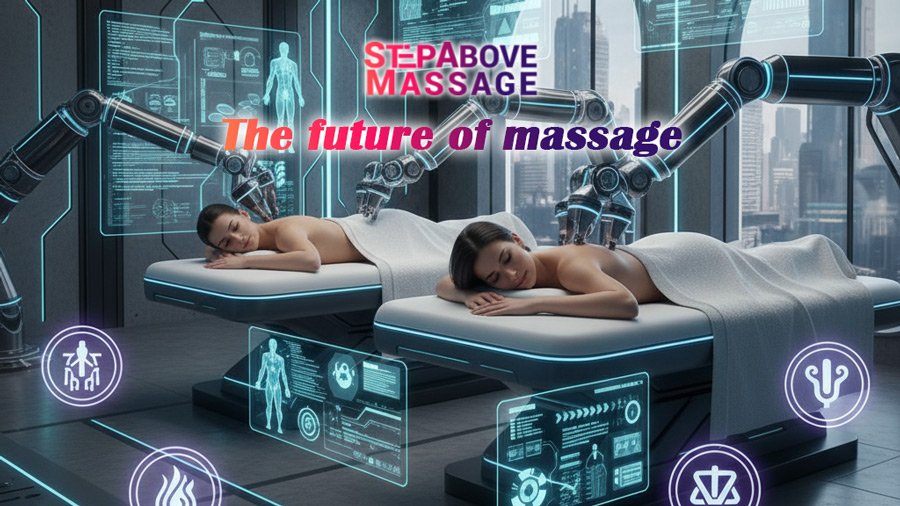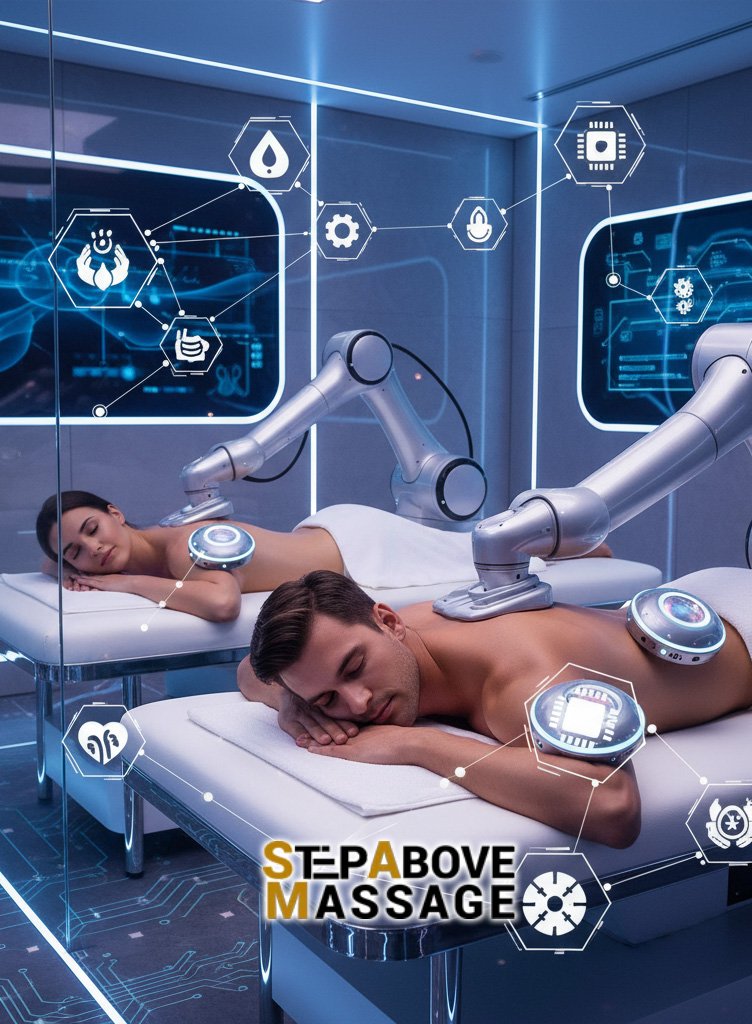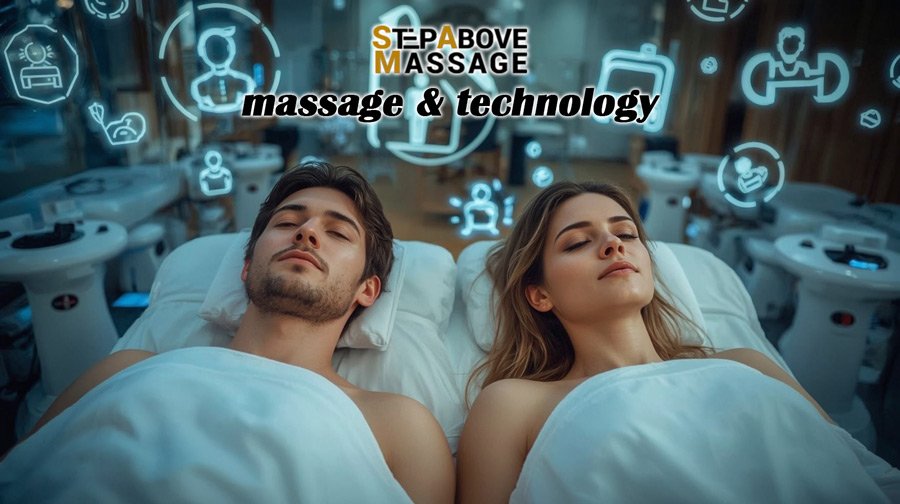
In an era where technology meets holistic health, AI is reshaping massage therapy with personalization, accessibility, and efficiency. Robotic devices deliver precise pressure, while software analyzes biometric data, transforming the wellness industry. Research shows AI boosts outcomes for chronic pain relief and tackles therapist shortages, reaching underserved areas. Yet, it sparks debates on balancing innovation with human touch, ethical data use, and societal effects. With the equipment market hitting $22.47 billion by 2030 and software at $1.6 billion by 2033, driven by personalized wellness demand, a hybrid AI-human model complements tradition, promoting well-being without losing empathy.
Table of Contents
ToggleKey Advances in AI for Massage Therapy
AI advancements personalize treatments, boost accessibility in remote areas, and let therapists focus on empathy over routines. AI robots offer precise pressure for chronic pain, freeing humans for emotional support. This hybrid frees therapists from repetition, allowing intuitive care. Robots replicate techniques accurately, but debates question mimicking human emotional depth. AI reduces session inconsistencies, therapist fatigue, and democratizes access, though ethical frameworks ensure equity. Ultimately, AI complements therapists, blending data insights with compassion for resilient wellness.
Current Innovations in AI-Powered Massage Technology
AI integration brings devices adapting real-time to physiology, tackling chronic pain precisely and easing shortages via automation. Robotic tables and handheld tools ensure consistent, affordable care, reshaping routines. Using computer vision and LiDAR scanning, they deliver evidence-based therapies rivaling traditions, cutting costs by 70%. As practices smarten, AI bridges service gaps in spas and centers, promoting patient-centered efficiency.
Robotic Massage Tables and Chairs
AI robotic tables and chairs advance precision with LiDAR and vision sensors, mapping 3D points for dynamic pressure adjustments. Aescape’s dual arms provide deep tissue at $60-$120, cheaper than $100+ traditional rates, avoiding fatigue. Robosculptor uses LiDAR for protocols; Flexiv’s Rizon 4 mimics Tui Na robotic therapy with heated tools and biometric tracking. Osaki DuoMax chairs monitor heart rate via sensors for app-controlled relaxation. These address shortages, enhance pain relief, and make therapy inclusive, though human intuition remains key.
Massage Guns Technology and Advanced Wraps
Massage guns technology and wraps enable at-home recovery with AI features for chronic issues. Guns adjust speeds via muscle feedback, easing tension and circulation, aiming for quieter, longer-battery models by 2025. Therabody’s wraps blend heat, vibration, and LED with AI for pain penetration. Integrating wearables for biometric tracking, they boost rehab efficacy. While not replacing experts, they extend care proactively, aligning with trends via eco-friendly designs and reducing clinic visits.
Massage Business Management AI for Assessments and Operations
Massage business management AI automates assessments and operations for evidence-based efficiency. It analyzes histories and posture, recommending sequences for pain or rehab, enabling remote consults. Generative chatbots handle scheduling and feedback for loyalty; predictive analytics enable dynamic pricing and demand forecasting. Inventory predicts supplies sustainably. Intelligent management integrates wearables for personalization, boosting therapist efficiency while securing data ethically, turning clinics data-driven.

Future of Massage Therapy: Tech Meets Tradition
AI deepens integration via AR in massage, VR wellness, and wearable tech, pushing markets to $22.47 billion equipment by 2030 and $1.6 billion software by 2033. Personalized experiences drive immersive sessions blending tradition and innovation, aiding remote access and eco-friendly tech. Predictive IoT forecasts trends; generative AI refines practice ethically. This augments human skills for inclusive wellness without losing touch.
Immersive AR and VR Experiences
AR-enhanced tables synchronize sounds and visuals with massage for immersive relaxation and trust-building; Gharieni’s versions monitor actions to generate complementary music. VR creates anxiety-reducing virtual environments for stress relief, like Esqapes VR’s nature-inspired landscapes during therapy. Future devices inspired by Apple Vision Pro enable customized at-home virtual therapist sessions in personalized settings.
Predictive AI and Wearable Integration
Predictive AI forecasts demand, optimizes revenue, and adjusts pricing dynamically; wearables like smartwatches sync for real-time biometric adjustments in sessions. IoT combinations monitor well-being to tweak plans, extending therapy into connected wellness ecosystems; smart chairs analyze heart rate, tension, and stress for lifestyle recommendations and session modifications.
Generative AI in Research and Practice
Generative AI like ChatGPT aids content creation, communication, and education; future uses include drafting reports, personalized content, and automating marketing to free therapists for hands-on care. In clinics, it builds individualized plans from health data, but concerns involve accuracy, biases, authorship ethics, and privacy—requiring clear guidelines for safe healthcare use.
Balancing Technology and Human Touch in AI Era
Balancing technology and human touch in AI era highlights irreplaceable intuition and empathy. Robots handle routines precisely for pain relief, but humans build trust via cues. Hybrids enhance healing focus. New jobs like AI specialists counter loss fears, with 18% growth projected by 2033. Synergy augments bonds defining massage.
Comparison with Traditional Massage Therapy
Traditional massage offers empathy and adjustments for emotional healing, but varies with fatigue, costs more, and limits access. AI provides sensor precision, affordability, and 24/7 options for consistent pain relief, yet lacks depth. Research shows comparable effectiveness, with best results from integration: AI for routines, humans for empathy.
| Aspect | Traditional Massage | AI-Powered Massage |
|---|---|---|
| Precision & Consistency | Varies with therapist skill and fatigue | High, with real-time adjustments via sensors |
| Cost | Higher ($100+/hour) | Lower ($60-120/session) |
| Accessibility | Limited by location and availability | 24/7, at-home options |
| Emotional Depth | Strong empathy and rapport | Limited, focuses on physical relief |
| Effectiveness for Pain | Effective, supported by studies | Comparable, with potential for better consistency |
Ethical Considerations in Massage Tech and Data Security
Ethical considerations in massage tech demand regulations for privacy and equality as AI collects health data. Frameworks address biases for diverse treatments and access. Automation shifts jobs but creates specialist roles. Discussions on reduced interactions call for guidelines preserving care relations. Transparency mitigates risks, building trust for inclusive innovation.

Real-World Applications: How AI Is Already Making an Impact
AI robotic arms with LiDAR deliver guided massages, boosting pain management and satisfaction in centers. Pilots offer affordable care for conditions. Cases: Aescape at Lotte Palace reduces tension consistently; Mayo’s EMMA cuts chronic pain with human support; Float Spa scales services. These show benefits like savings and access in hybrids.
Challenges in Adopting AI Massage Technology
Adopting AI faces high initial costs deterring clinics, technical integration needing training, and customer resistance to robots over human comfort. Regulations vary for devices, complicating adoption. Biases and privacy amplify ethics, risking inequalities. Education and guidelines can ease transitions for resilience.
Long-Term Predictions and Social Effects
Long-term, AI integrates therapy into public health, boosting access in deprived areas and equity. It fosters wellness but risks reducing interactions, altering healing views. Analytics transform prevention via wearables, yet over-medicalization concerns persist. Inclusive policies enhance societal empathy and connection.
Conclusion: A Hybrid Future for Massage Therapy
AI ushers hybrids with robotic massage devices, VR, and wearables converging intuition for personalized wellness. It tackles pain, shortages, and inefficiencies ethically. Embracing barriers and impacts, industry harnesses AI to augment touch, benefiting all in holistic healing. for more informational blogs you can visit step above massage, the best massage clinic in Raleigh and Wake forest.
Frequently Asked Questions
Does AI threaten massage therapist jobs?
No, it creates new roles in tech integration and maintenance, with job growth projected at 15% from 2024 to 2034.
How will AI impact massage therapy accessibility in the future?
AI will enhance accessibility via remote VR sessions and affordable at-home devices, reaching global underserved areas effectively.
What advancements in AI for massage are expected by 2030?
By 2030, expect AR/VR integrations, predictive preventive care, and advanced robotics closer to human touch for personalized wellness.



